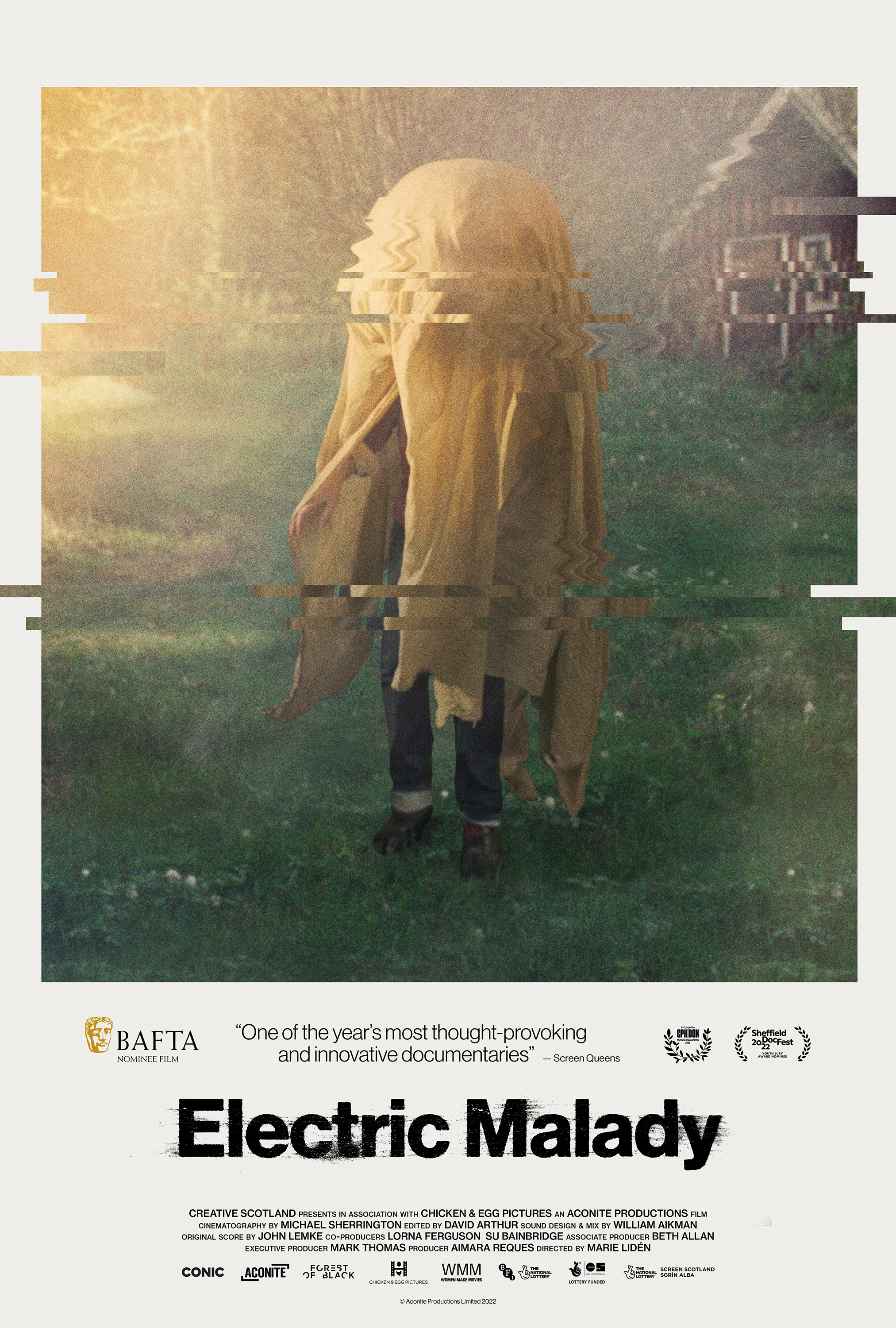Eye For Film >> Movies >> Electric Malady (2021) Film Review
Electric Malady
Reviewed by: Jennie Kermode

A contender for Outstanding Début By A British Writer, Director or Producer at the 2023 BAFTAs, Electric Malady is one of those documentaries which really is stranger than fiction, and no less powerful. It was made by Swedish-born Marie Lidén, whose mother struggled with an illness much like that of its subject, with a profound effect on her own life. Although you may or may not be convinced by claims made about that illness, it’s a fascinating watch which will leave feeling for those affected regardless.
At its heart is William, a young man who, swathed in sheets, resembles nothing so much as Casey Affleck’s character in A Ghost Story. Like a ghost, he is cut off from the life he once loved, hesitant to leave his specially constructed cabin in a remote patch of Swedish forest. “A proper troll forest,” he calls it, and there’s much here that feels like a fairy tale. Fine metal threads run through William’s sheets, designed to provide a form of shielding. More than once, he says, offering cautionary advice, they have caught fire when he’s been cooking. His surroundings are beautiful, but he rarely gets to go outside – like lifting up the sheets, it just hurts too much. Perhaps the thing that hurts most of all, however, is knowing that people think he’s making it all up.

The only explanation which William has been able to find for his illness is electromagnetic hypersensitivity syndrome (EHS), a condition which is increasingly talked about online, despite repeated studies having failed to find much of an evidential basis for it. Partway through the film, he describes how his then girlfriend, Maria, found out about it after she developed symptoms which seemed to get worse when she was around fluorescent lights and her computer. When she had to stop working as a result, he took over from her and subsequently became ill himself. A doctor who visits William and has come to believe that the syndrome is real cites another case of three people who shared a workplace becoming ill, which adds to the suspicion that there is another cause here, but Lidén isn’t interested in rehashing controversies which it’s easy to explore elsewhere. Her interest is in William’s lived experience of what is happening to him.
Living with an illness which nobody takes seriously has consequences. Because he lists his condition as EHS, which the Swedish government does not accept, William is unable to access social security payments, so, being unable to work, he is entirely dependent on the support of his parents. Their lives have been turned upside down by this. Psychosomatic explanations have been posed for William’s symptoms, but he has been evaluated by psychiatrists, after another traumatising experience, and declared sane. Nobody in authority seems to be willing to set diagnosis aside for the meantime and provide practical help with his symptoms. His fatigue, headaches and vertigo are going entirely untreated.
There is a lot here which people with all kinds of chronic illnesses and disabilities will relate to. Footage from William’s old video diaries and a documentary which his sister made about him show us something of the life he has lost – show him hiking through the forest, cycling, swimming in a lake. He is clearly experiencing grief, and at certain points in this film he gets very low. Lidén follows him through his process of adjustment and search for hope. There are technical challenges. He can cope with a digital camera, but not if it gets too close. He gets exhausted quickly, so he was only able to be filmed in short sequences (an experience which keeps many ill people from sharing their stories and being visible in the modern world). And then, of course, there’s the difficulty presented by his hidden face. He seems to float through the frame, vague and nebulous; in conversation, the camera finds curious little details to focus on. It’s such constraints which foster innovation and Electric Malady is continually interesting to look at.
Although William’s circumstances are extreme, he comes across as very down to earth, doing his best to be pragmatic. Around the world, there are tens of thousands of people facing similar difficulties. This film doesn’t ask us to believe in EHS. It simply asks us to empathise – one of the things that cinema does best. It is a privilege to be allowed inside William’s world, and one hopes that the experience will help to allay the feelings of shame which have exacerbated his predicament. This fascinating film is a brave and enlightening piece of work with a lot to say about how we relate to each other.
Reviewed on: 20 Feb 2023
















